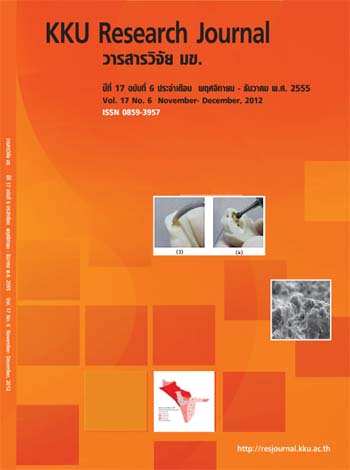Application of thermosyphon heat pipes for paddy dehydration process
Main Article Content
Abstract
The objective of this research was to develop a paddy drying system using thermosyphon heat pipes (THPs).
In this study, R-134a was used as the working fluid. The effects of various operating and geometric parameters,
i.e., energy sources (hot water and hot air), temperature of energy sources (60, 70 and 80 oC) and characteristics
of themosyphon heat pipes (finned and unfinned thermosyphon heat pipes), on the change in moisture content
and quality of paddy were then investigated and discussed. Paddy with an initial moisture content of around 26%
(d.b.) was used as a test material. The experiments were performed until the paddy moisture content of 14%
(d.b.) was obtained at each drying condition. The results obtained from the experiments showed that, comparing
with hot air and unfinned thermosyphon heat pipes, the rate of moisture reduction of paddy was higher when hot
water and finned thermosyphon heat pipes were employed. It was also found that the rate of moisture reduction
of paddy increased with an increase in the temperature of the energy source. With the use of finned thermosyphon
heat pipes, the time required to attain the desired final moisture content of paddy could be considerably reduced
compared with unfinned thermosyphon heat pipes. In terms of paddy quality, it was found that the head rice yield
and whiteness of paddy obtained in this work decreased only slightly when compared with the reference paddy.


